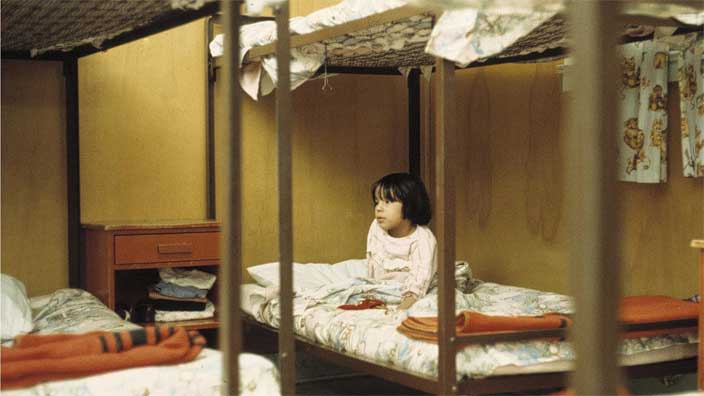About the lists: Calls to socially distance and self-isolate are driving people to look for things to watch. But the sheer amount of options out there can be overwhelming. For this reason, we at the Centre for Screen Cultures are producing themed playlists of film, video, and television so you can organise your own series or festival at home (or home school). They will update here and here: https://screenculture.wp.st-andrews.ac.uk/category/media-playlists/
We are fortunate to have film blogger, cinephile, film critic and educator, Girish Shambu, provide a list of 10 film/media works made by Indigenous women from Canada. All of them can be streamed for free at the National Film Board of Canada (NFB) website. From Girish:
I owe profuse thanks to my friend Michelle van Beusekom, who introduced me to many of these films when she did a series of Facebook posts last June for National Indigenous History Month. Thank you for the gift of these many discoveries, Michelle.
*****
This list begins and ends with the great Alanis Obomsawin, the Abenaki filmmaker, singer and activist who has made over 50 films in the course of 5 decades. In Canadian film culture, she is a household name—I only wish it were so all over the world.
Christmas at Moose Factory (Alanis Obomsawin, 1971). This lyrical 13-minute documentary, Obomsawin’s debut film, is composed of colored drawings by Cree children in a residential school in Northern Ontario, the pictures being narrated by the children themselves.
Finding Dawn (Christine Welsh, 2006). Welsh, an acclaimed Métis filmmaker, travels to Vancouver and then the Highway of Tears in this documentary feature, to tell the story of Indigenous women who have been murdered or have gone missing.
Birth of a Family (Tasha Hubbard, 2016). In this feature-length documentary, three sisters and a brother meet for the first time, having been taken from their mother during the time of the notorious “Sixties Scoop”, when thousands of Indigenous children were removed and adopted in non-Indigenous homes. Hubbard’s latest film, nîpawistamâsowin: We Will Stand Up, about the killing of 22-year-old Cree man Colten Boushie by a white farmer in Saskatchewan, was one of the best documentaries of 2019.
Hands of History (Loretta Todd, 1994). Todd, who is Méti Cree, is part of a loosely labeled “second wave” of Indigenous filmmakers in Canada who began making films in the 1990s. The 50-minute-long Hands of History profiles four contemporary female artists—Doreen Jensen, Rena Point Bolton, Jane Ash Poitras and Joane Cardinal-Schubert—who each speak about their creative practices.
Woman Dress (Thirza Cuthand, 2019). Cuthand is queer and of Plains Cree and Scots descent. This 6-minute film, about a pre-contact Two Spirit person, is based on an oral account she heard in her family growing up. Her recent suite of short films, NDN Survival Trilogy, which addresses the effects of extractive capitalism on Indigenous communities in Canada, was one of the highlights of this year’s Berlinale.
Doctor, Lawyer, Indian Chief (Carol Geddes, 1986). Five Indigenous women across Canada of varying age and background—politician, teacher, lawyer, deckhand, and band council chief—are the subject of this stirring half-hour documentary.
Two Spirited (Sharon A. Desjarlais, 2007). A 6-minute film that tells the story of Rodney “Geeyo” Poucette’s struggle against prejudice in the Indigenous community as a two-spirited person.
Nowhere Land (Rosie Bonnie Ammaaq, 2015). In 1984, when she was eight years old, Bonnie Ammaaq, her parents and her siblings moved from the government settlement of Igloolik to North Baffin, where they lived off the land for a decade, as their ancestors had done. This 15-minute film tells that story. North Baffin has since been transformed into one of the world’s largest open pit iron mines.
Three Thousand (asinnajaq, 2017). asinnajaq, also known as Isabella Rose Weetaluktuk, is an Inuk artist and filmmaker from Inukjuak, Nunavik. This 14-minute film ingeniously blends archival footage with animation to imagine her home community of Inukjuak in the future. It won the Best Experimental film award at the media arts festival, imagineNATIVE.
Mother of Many Children (Alanis Obomsawin, 1977). In this, her first-feature length documentary, Obomsawin takes up the centrality of mothers and motherhood in Indigenous history and culture. “An album of Indigenous womanhood, the film portrays proud matriarchal cultures that for centuries have been pressured to adopt the standards and customs of the dominant society.” (NFB)
